Blog
Unveiling the Art of Silk Weaving
Silk, a fabric synonymous with luxury and elegance, has captivated the world for centuries. Its shimmering beauty and delicate drape make it a coveted choice for high-end fashion. But behind the allure of silk lies a rich tapestry of intricate silk weaving techniques that determine the final character of the fabric. Understanding these techniques allows us to truly appreciate the nuances of silk garments and the artistry involved in their creation.
Fundamental Silk Weaving Techniques
Plain Weave Silk Fabric
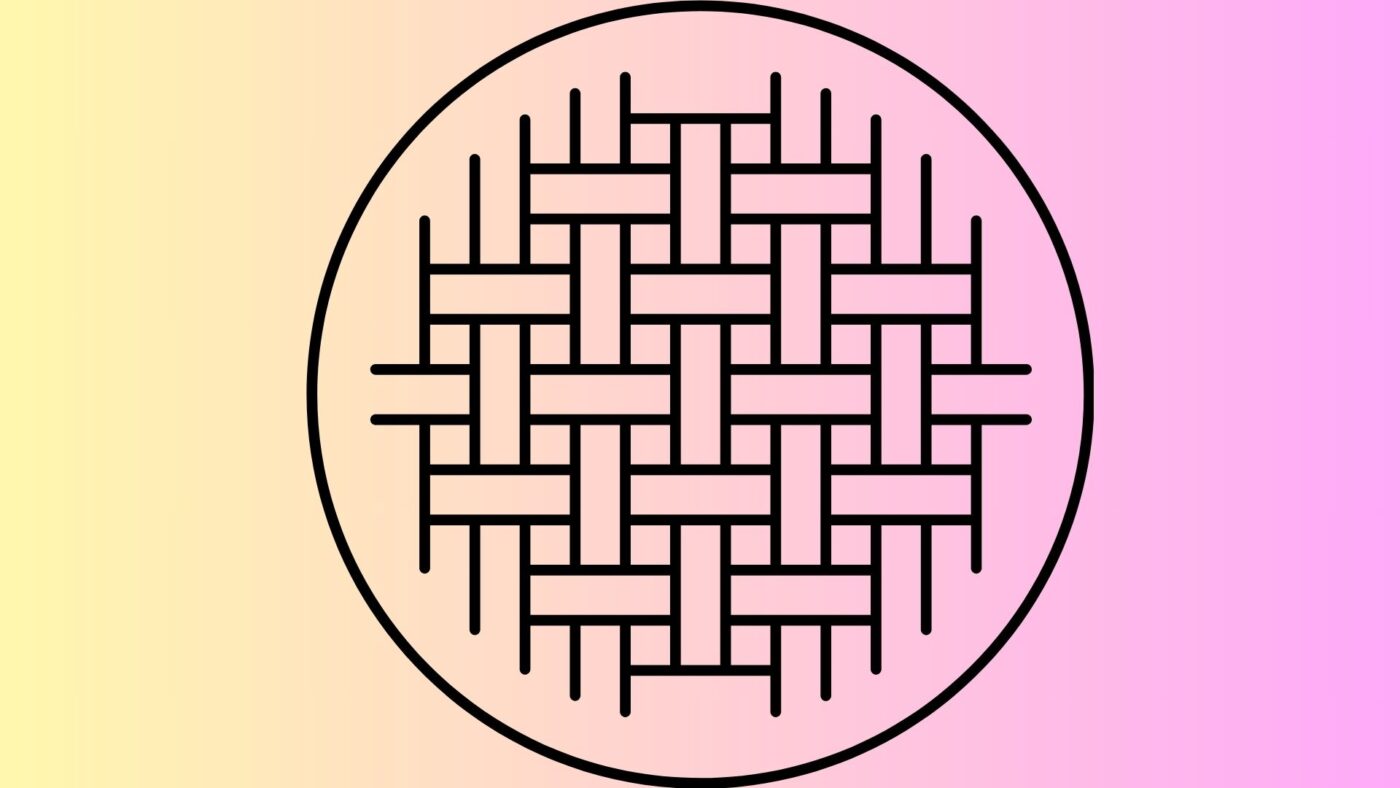
The most basic and versatile of all weaving techniques, the plain weave is characterized by its simple over-under structure. Warp threads (running lengthwise) and weft threads (running crosswise) interlace in a straightforward pattern, creating a balanced and durable fabric. Plain weave silk is known for its strength, relatively even texture, and versatility, making it suitable for a wide range of garments.
Satin Weave Silk
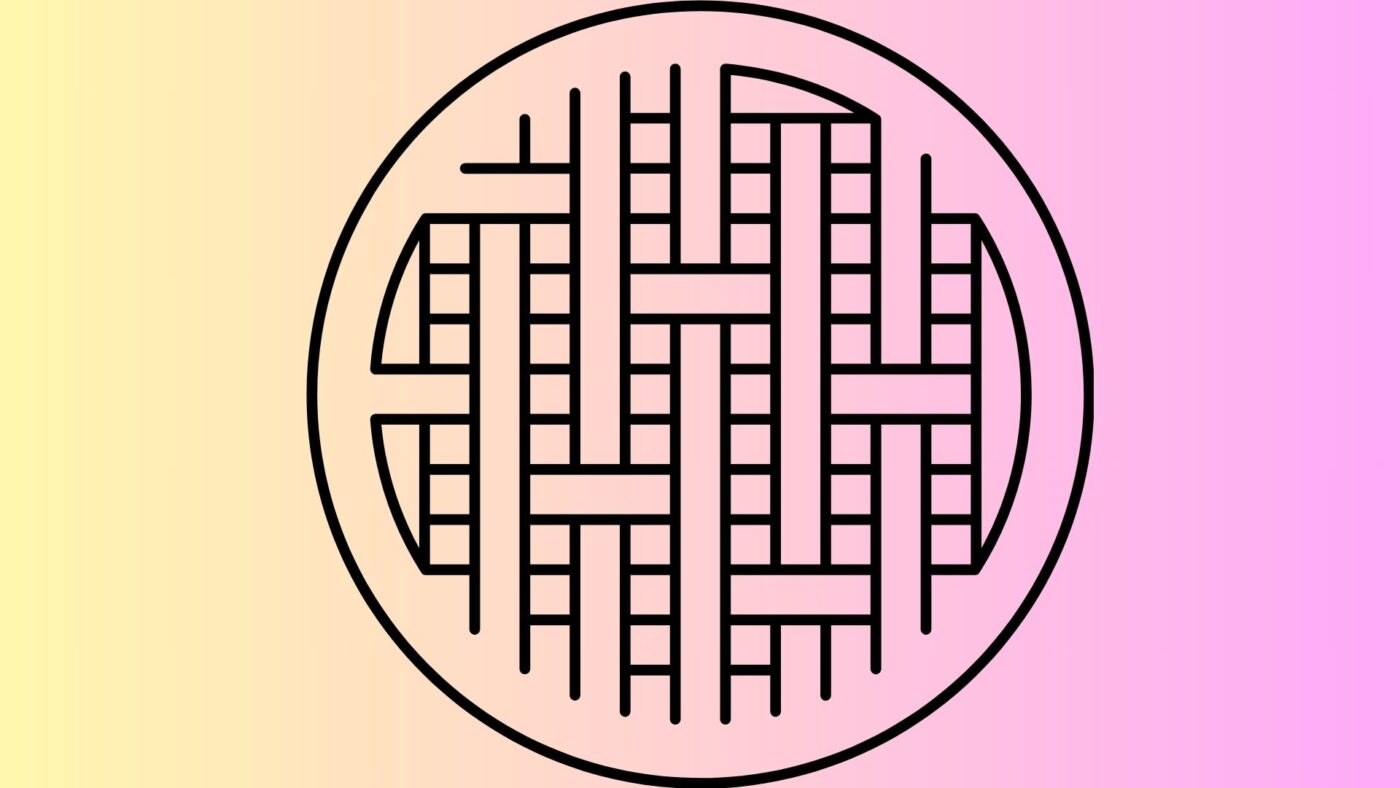
Satin weave distinguishes itself with its characteristic sheen and smooth surface. Unlike plain weave, satin weave features “floats” where the warp threads pass over multiple weft threads before interlacing. These floats create the lustrous surface that satin is known for.
A close relative, sateen weave, achieves a similar effect but with weft floats dominating instead of warp floats. Satin weave silk drapes beautifully and is often used for luxurious evening wear, lingerie, and scarves. Charmeuse, a popular type of silk, is typically made with a satin weave.
Twill Weave Silk
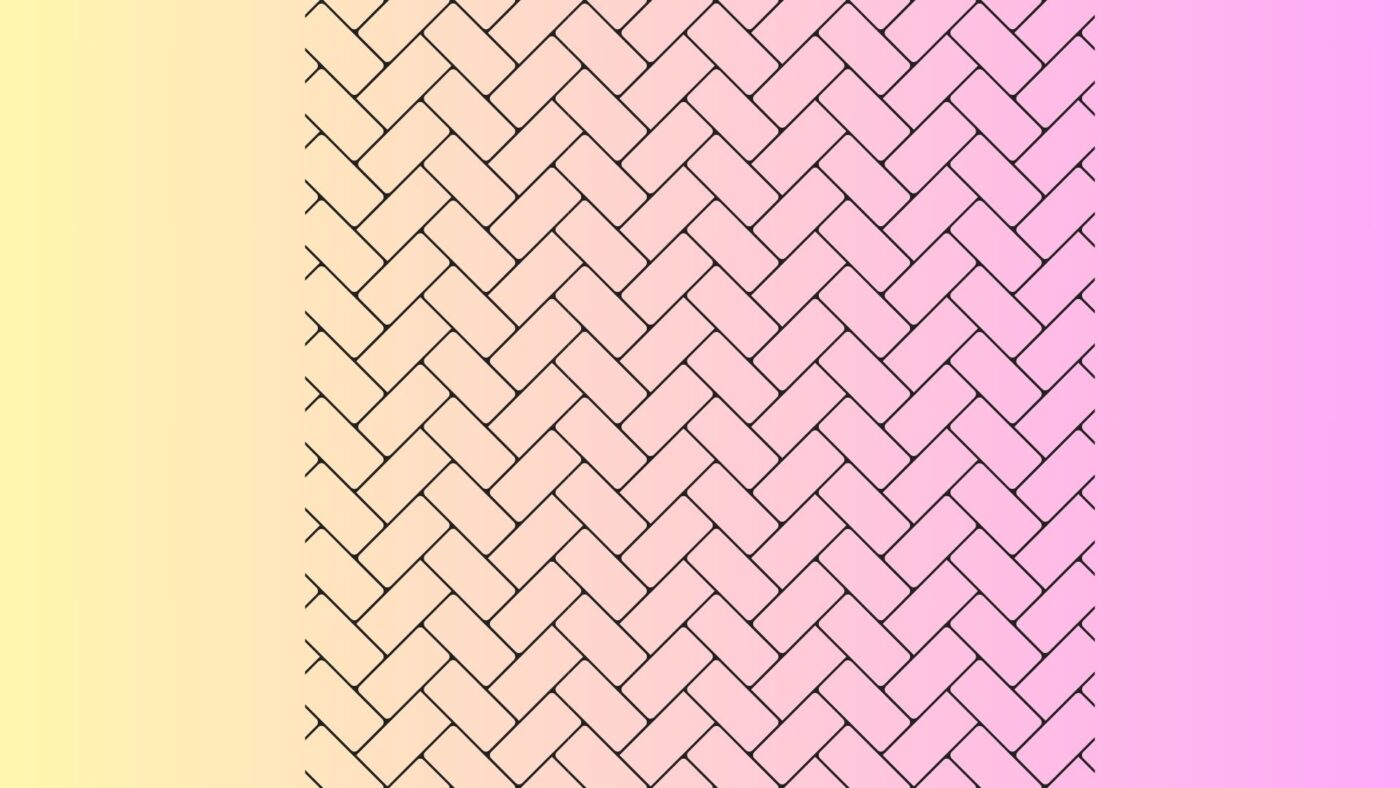
Twill weave is easily recognizable by its characteristic diagonal rib pattern. This distinctive texture is created by offsetting the intersection points of the warp and weft threads. Twill weave silk is known for its durability, drape, and resistance to wrinkles, making it suitable for tailored garments, pants, and outerwear. Common examples include denim (though typically made from cotton) and chino.
Pile Weave Silk
Pile weave is a more complex weaving technique that creates a raised surface, adding a textural dimension to silk fabrics. This technique involves weaving an extra set of yarns, either warp or weft, that form loops or cut ends, resulting in a plush, velvety, or textured surface.
Velvet, a classic example of pile weave, is known for its luxurious softness and rich appearance. While silk velvet is less common than cotton or synthetic velvet, it offers an unparalleled level of luxury and sheen. Other pile weave variations can create interesting textures and patterns in silk fabrics, adding depth and visual interest to garments and accessories.
>>> See more: A Guide to Difference Types of Silk
Exploring Global Silk Weaving Traditions
Chinese Silk Weaving
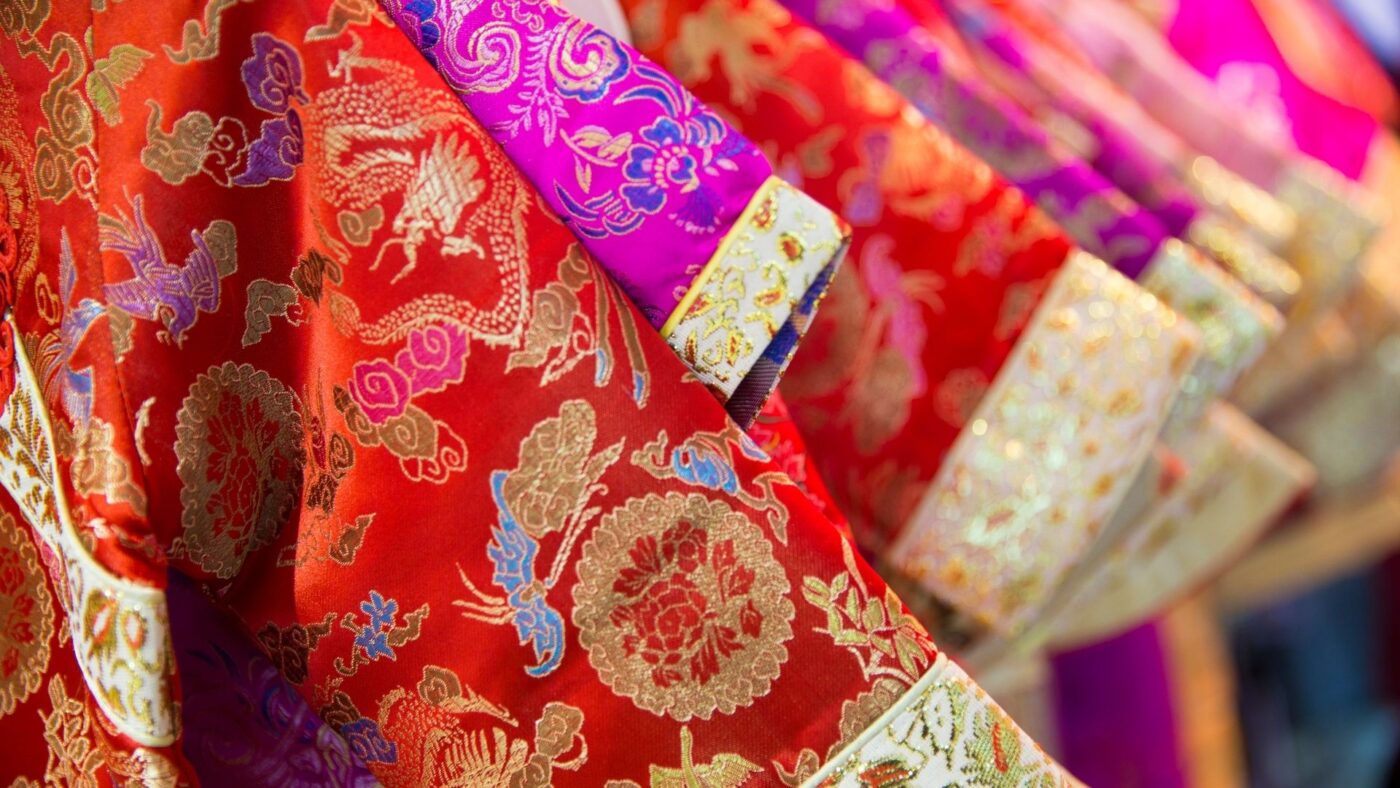
China, the birthplace of silk, boasts a rich history of silk weaving spanning millennia. From the intricate brocades of the imperial courts to the delicate silks used in traditional garments, Chinese silk weaving techniques are renowned for their artistry and complexity.
Brocade, characterized by raised patterns woven into the fabric, and damask, known for its reversible patterns, are just a few examples of the sophisticated techniques developed in China.
Japanese Silk Weaving
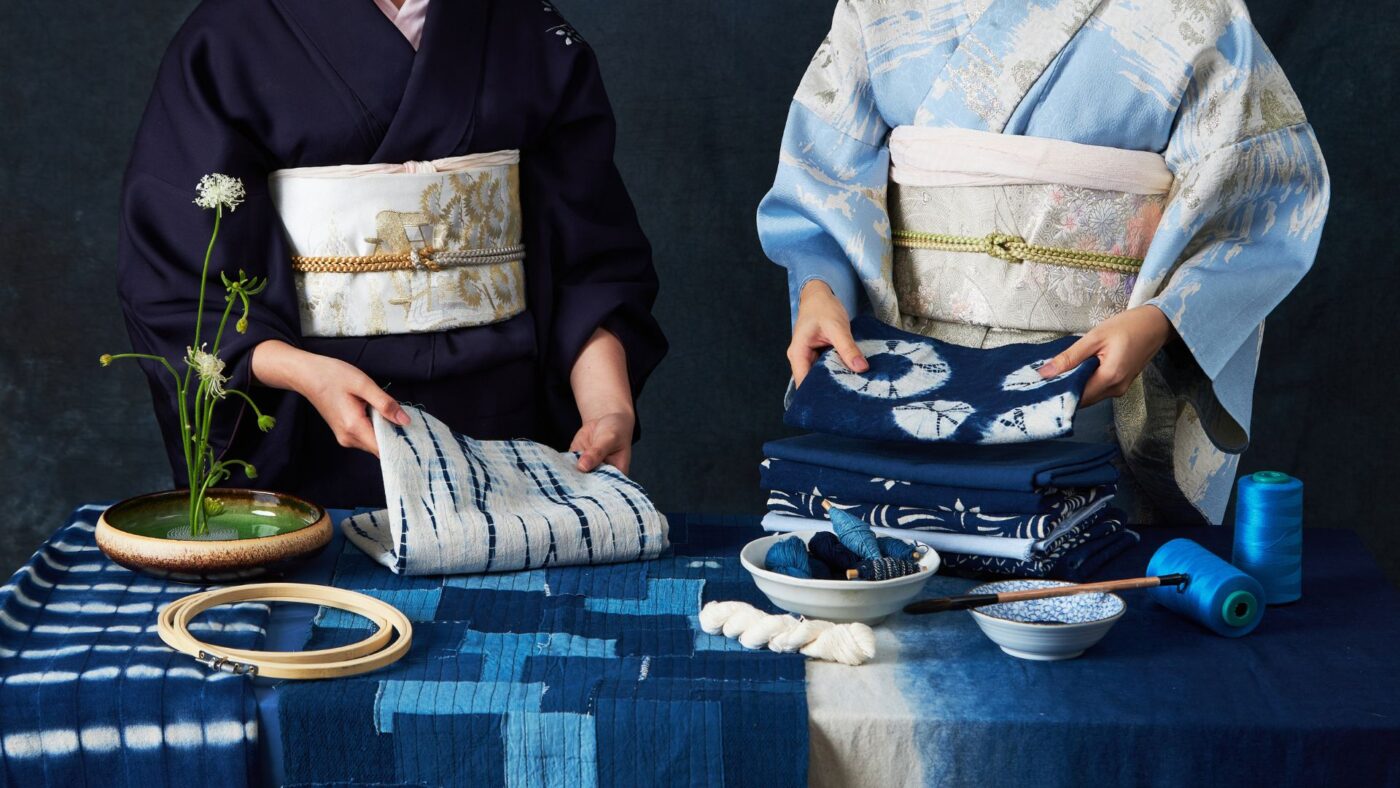
Japan, too, has a long and distinguished tradition of silk weaving. Nishijin-ori, a prominent style of Japanese silk weaving, is known for its intricate designs, often incorporating metallic threads and vibrant colors. Japanese silk weaving is deeply intertwined with the country’s cultural heritage, playing a significant role in traditional ceremonies and attire.
Thai Silk Weaving
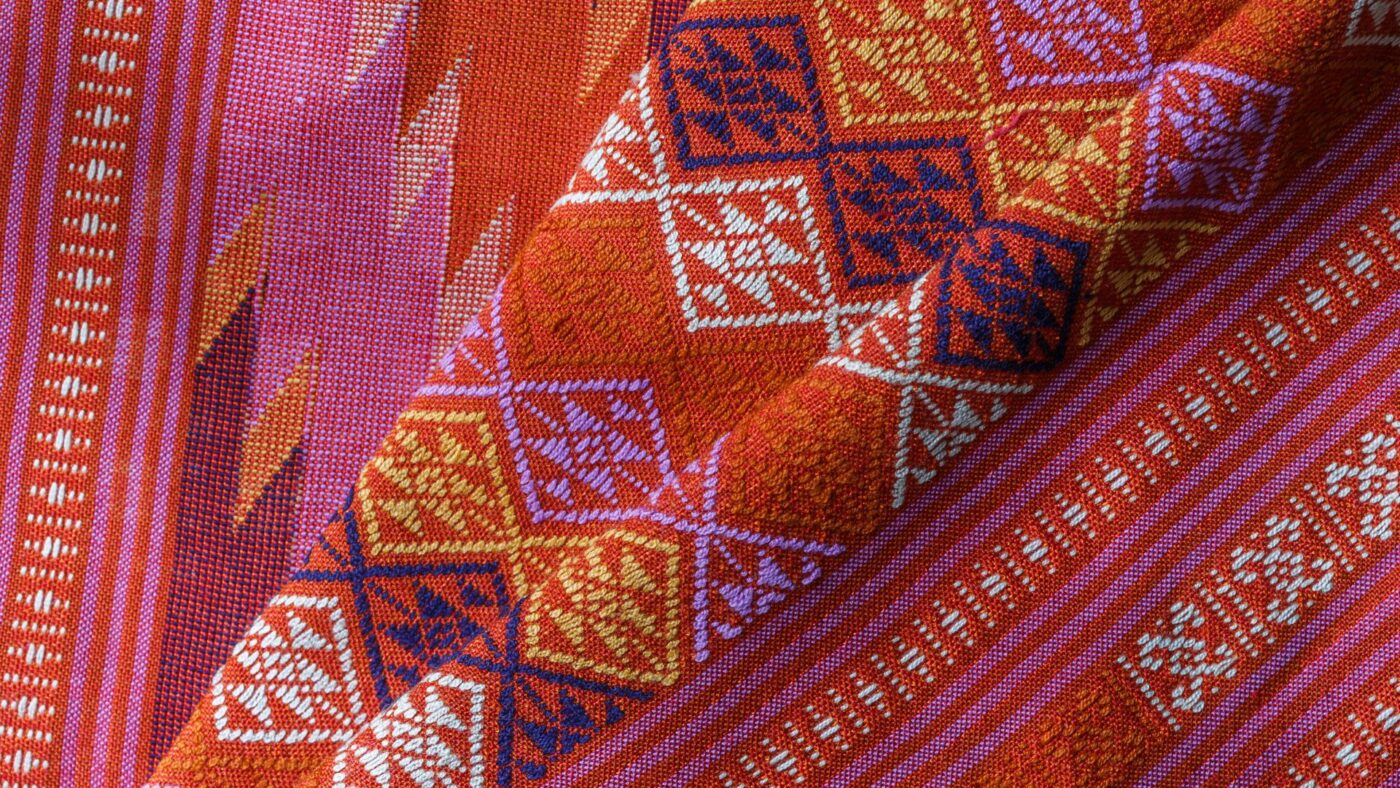
Thai silk weaving is renowned for its vibrant colors, intricate patterns, and the use of traditional handlooms. Often produced in small villages and family workshops, Thai silk reflects the rich cultural heritage of the region. Different regions of Thailand specialize in unique styles and motifs, from the richly patterned silks of the Northeast (Isan) to the shimmering gold and silver brocades of the central regions.
Thai silk is often characterized by its use of uneven yarns, which create a slightly irregular texture and add to the unique character of the fabric. The intricate patterns, often inspired by nature, mythology, and royal traditions, are meticulously woven into the fabric using techniques passed down through generations, making each piece a testament to the artistry and skill of Thai weavers.
Specialty Silk Weaving Techniques & Materials
Lotus Silk Weaving
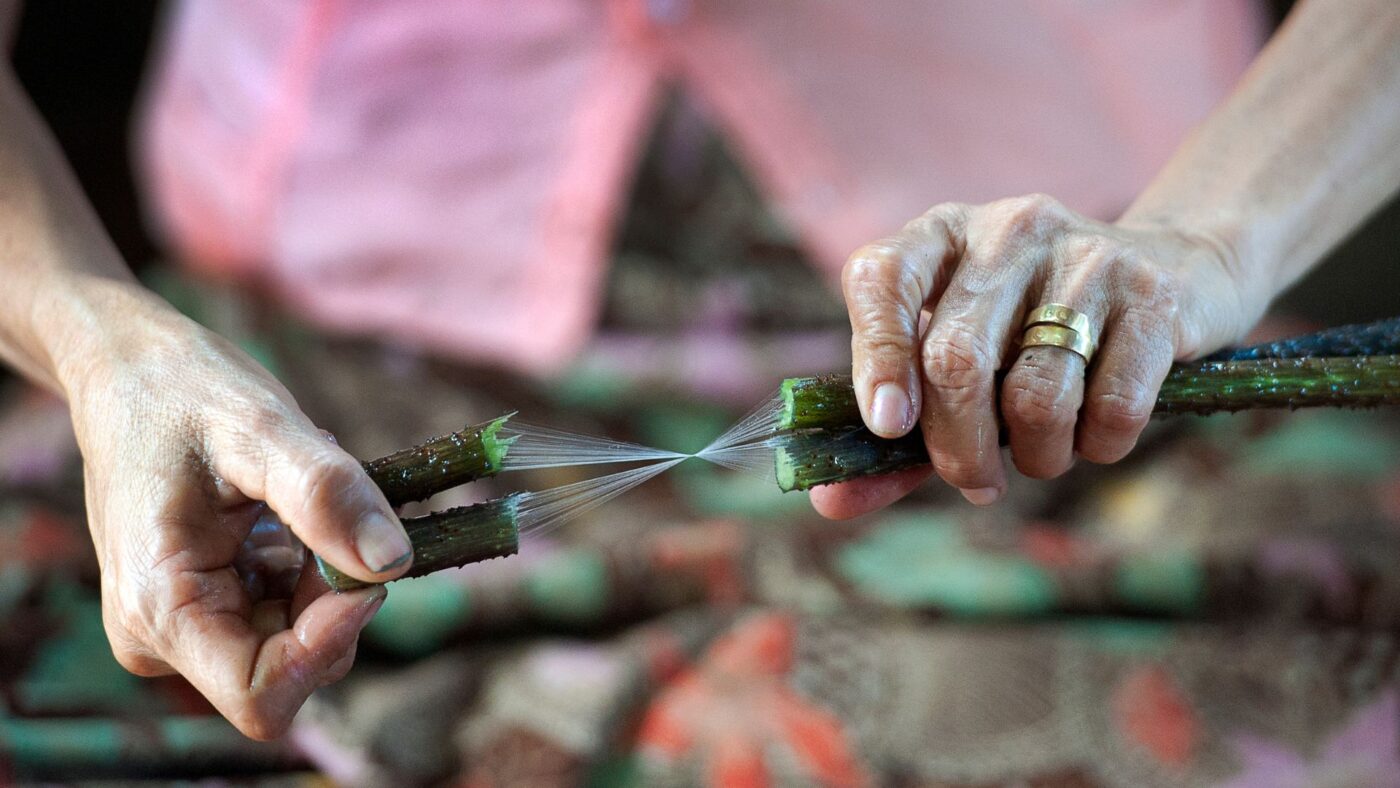
A unique and rare form of silk weaving involves extracting fibers from the stems of lotus plants. This labor-intensive process yields a delicate and highly prized silk with a unique texture. Lotus silk weaving is not only a testament to human ingenuity but also represents a sustainable and ethical approach to textile production.
>>> See more: What is Momme Silk
The Silk Weaving Loom: From Handloom to Power Loom
Hand Weaving Silk
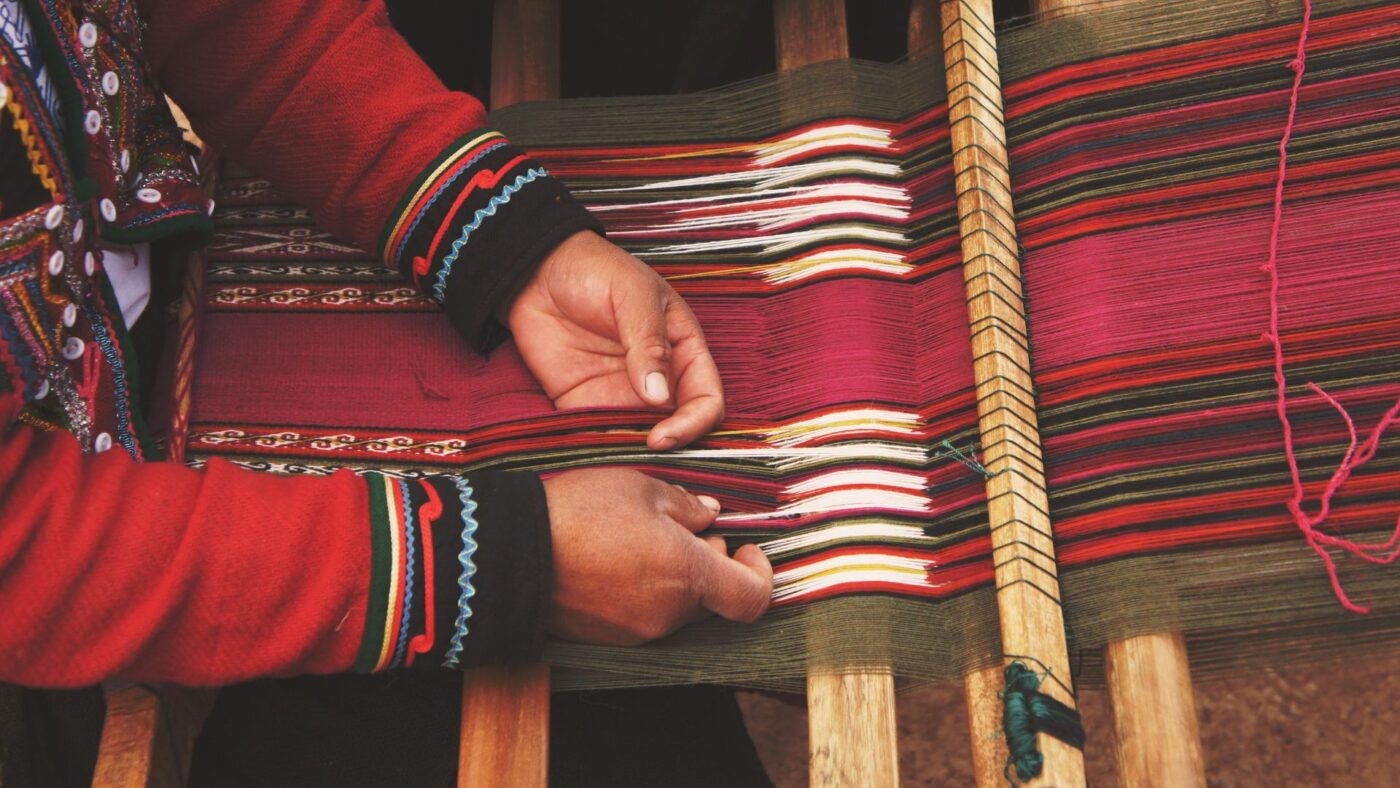
Handloom weaving, a traditional craft passed down through generations, represents the pinnacle of artistry in silk production. Skilled artisans meticulously interlace threads on hand-operated looms, creating unique textiles with an unmatched level of craftsmanship. Handwoven silk often possesses subtle irregularities and variations that add to its character and charm.
Silk Weaving Loom Technology
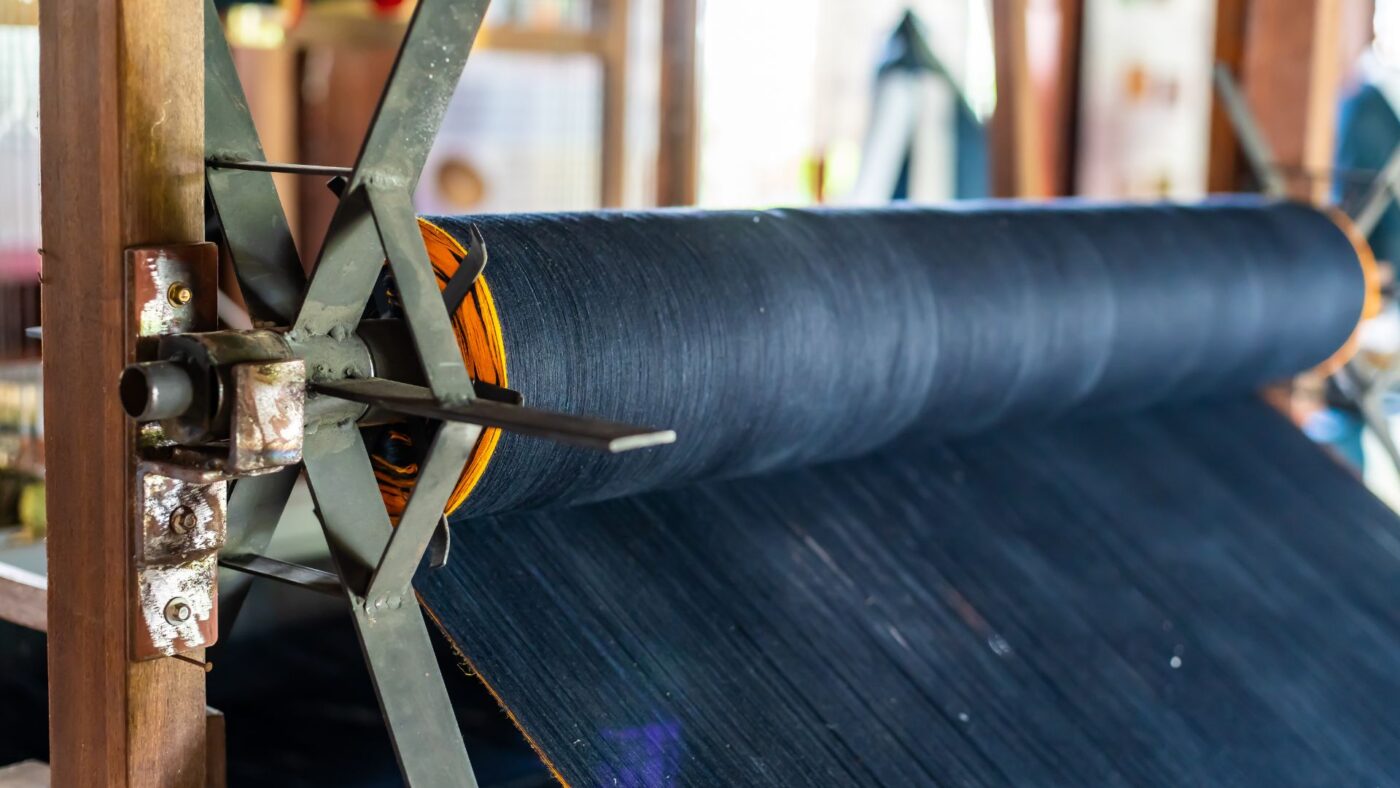
While handlooms remain essential for preserving traditional techniques, technological advancements have led to the development of power looms, enabling larger-scale silk production. From basic handlooms to complex Jacquard looms capable of weaving intricate patterns, the evolution of loom technology has significantly impacted the silk industry.
Charmeuse Silk Weave: A Focus on Luxury
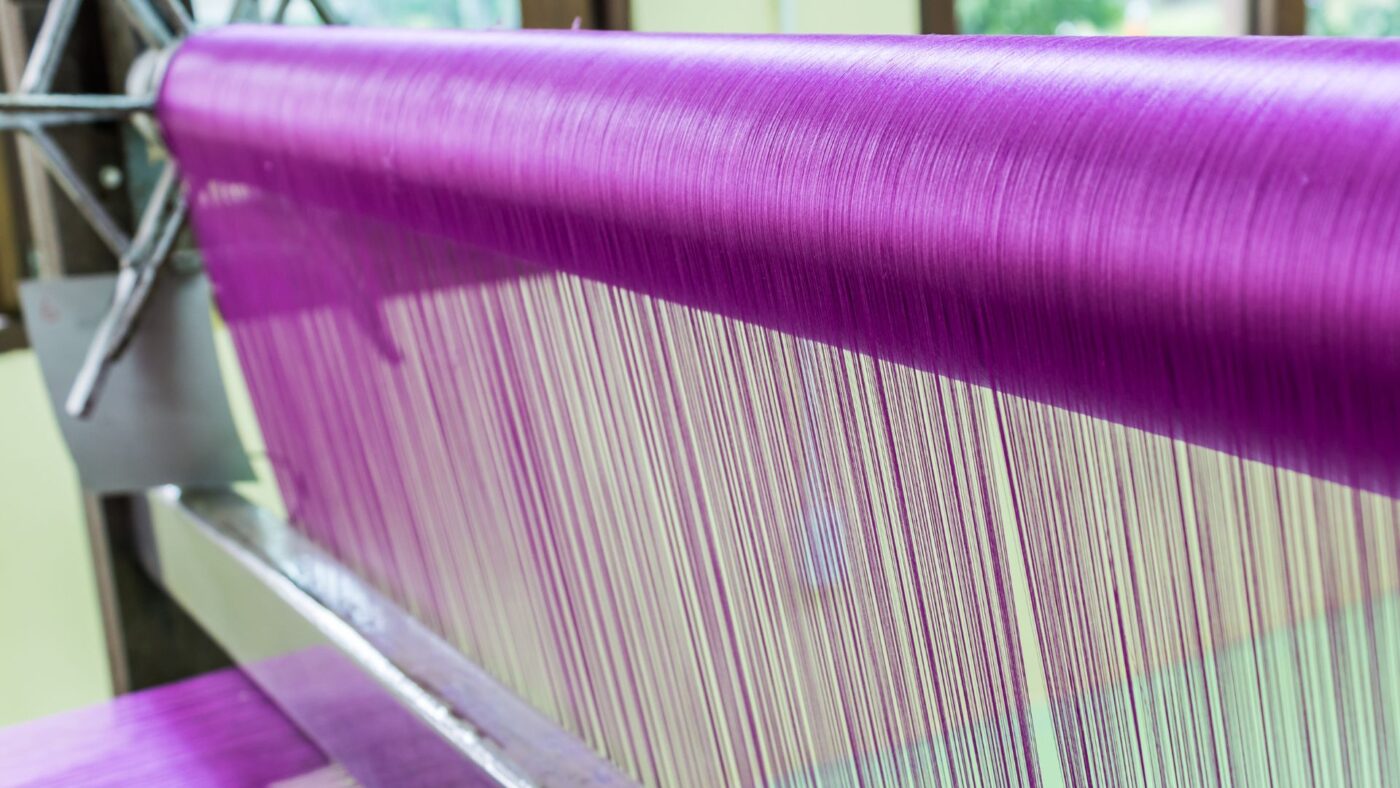
Charmeuse, a luxurious silk fabric, is typically created using a satin weave, which gives it a distinctive sheen and smooth, drapey texture. The front of the fabric has a lustrous finish, while the back is more matte. This characteristic makes charmeuse ideal for flowing garments like evening gowns, lingerie, and bias-cut dresses. Its luxurious feel and elegant drape contribute to its popularity in high-end fashion.
Conclusion
From the simplest plain weave to the intricate artistry of brocade and the luxurious sheen of charmeuse, the world of silk weaving offers a fascinating exploration of textile techniques. Understanding these techniques allows us to appreciate the craftsmanship and artistry that goes into creating each unique piece of silk. So, the next time you admire a silk garment, take a moment to consider the intricate weaving process that brought it to life.


